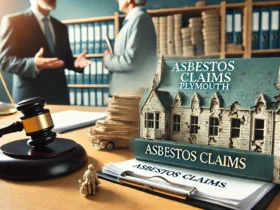Introduction to the Stuffed Animal Court Case
The Stuffed Animal Court Case is a unique legal dispute that involves a conflict over a stuffed animal. This case has gained attention because it is unusual to see a stuffed animal at the center of a legal argument. The details of the case may involve ownership rights, damage claims, or another legal issue related to the stuffed animal.
The Stuffed Animal Court Case has become significant because it highlights how even something as simple as a stuffed animal can lead to important legal questions. It also raises interesting debates about property rights, emotional attachment, and how the law deals with non-living objects like toys. This case has captured public interest due to its odd and fascinating nature.
Background of the Stuffed Animal Court Case
Key Events Leading to the Court Case
The Stuffed Animal Court Case began after a disagreement involving the ownership or condition of a stuffed animal. The events leading up to the court case likely include a personal or legal conflict where one party believed their rights over the stuffed animal were violated. This may involve damage to the stuffed animal, custody issues, or a dispute about its value or significance.
Parties Involved in the Dispute
The dispute in the Stuffed Animal Court Case involves two main parties. One party may be the owner or someone who has an emotional attachment to the stuffed animal, while the other party could be responsible for the conflict, such as a person accused of damaging or taking the stuffed animal. Both parties brought their claims to the court for a legal resolution.
The Main Legal Question or Issue at the Heart of the Case
The central legal question in the Stuffed Animal Court Case revolves around the rights and responsibilities related to the stuffed animal. This may include whether the stuffed animal was wrongfully damaged, taken without permission, or if there are ownership disputes. The court will decide who holds the legal rights to the stuffed animal and how the situation should be resolved.
The Legal Argument in the Stuffed Animal Court Case
What Was the Argument Presented by Each Side?
In the Stuffed Animal Court Case, each side presented different arguments about the ownership or handling of the stuffed animal. One party likely argued that they were the rightful owner and that the stuffed animal was either taken, damaged, or mistreated in a way that violated their rights. The opposing side may have claimed that they had no legal obligation to the stuffed animal, or that any harm caused was accidental or not significant.
Legal Basis and Claims Made in Court
The party bringing the case likely based their argument on property rights, asserting that the stuffed animal was their personal property and that any interference was unlawful. They may have claimed damages based on emotional attachment or financial value. The defending party might have relied on arguments like lack of intent, shared ownership, or questioned the actual value of the stuffed animal. Both sides would use legal precedents related to property law to support their claims.
Analysis of How the Law Applies to the Situation
The court will need to determine how the law views a stuffed animal in the context of property rights. Though it is a simple object, the law might treat the stuffed animal as valuable personal property if it holds significant emotional or financial value. The court must decide if any legal responsibility was breached and whether compensation is required based on the circumstances of the case. This could involve assessing the emotional value of the stuffed animal and how property laws protect such items.
Court Proceedings and Key Moments
Timeline of the Court Case
The Stuffed Animal Court Case likely followed a typical legal timeline. It began with the filing of a complaint, where the plaintiff (the person claiming harm) presented their case in court. This was followed by initial hearings, where both parties presented their arguments. The court then set a date for the trial, where evidence and testimonies related to the stuffed animal were reviewed. The timeline may have also included witness statements, legal motions, and pre-trial conferences.
Key Moments or Turning Points During the Trial
Several key moments might have occurred during the Stuffed Animal Court Case. One turning point could be the introduction of key evidence, such as photos or witnesses supporting the emotional or financial value of the stuffed animal. Testimonies from experts, or emotional statements from the owner, may have had a major impact on the case. Another key moment could be when the defense presented their argument, possibly raising questions about ownership or the actual value of the stuffed animal. Any surprising revelations or legal precedents cited by the lawyers could have shifted the direction of the trial.
Public or Media Reactions to the Case
The Stuffed Animal Court Case likely captured the attention of the public and media due to its unusual nature. As a court case involving a stuffed animal, it may have sparked humor or curiosity, leading to media coverage. Some public reactions may have been light-hearted, while others might have focused on the legal implications and the emotional attachment people can have to personal belongings. If the case raised larger questions about property rights or emotional damages, legal experts and commentators may have weighed in, adding depth to the public’s understanding of the case.
The Outcome of the Stuffed Animal Court Case
What Was the Final Court Ruling?
In the Stuffed Animal Court Case, the final ruling likely favored one party based on the legal arguments presented. The court may have ruled in favor of the plaintiff, determining that they were the rightful owner of the stuffed animal and awarding them compensation for any damages. Alternatively, the court might have sided with the defense if they successfully argued that no legal harm occurred.
The Reasoning Behind the Court’s Decision
The court’s decision in the Stuffed Animal Court Case would have been based on the application of property law. The judge may have considered the emotional attachment or monetary value of the stuffed animal when deciding on compensation. If the court ruled in favor of the plaintiff, the decision may have focused on the proof of ownership and the extent of harm caused. If the defense won, the ruling may have emphasized lack of intent, shared ownership, or the lack of significant damage to the stuffed animal.
Legal Precedents Set by the Ruling
The Stuffed Animal Court Case might have set an interesting legal precedent regarding how courts treat personal belongings with emotional value, such as a stuffed animal. While most property disputes focus on financial value, this case could influence future cases involving sentimental items. It may also clarify how courts should assess damages when non-living objects hold deep emotional significance for individuals. If the ruling highlighted the importance of emotional value, it could open doors for similar claims involving personal attachments to property.
Public Reactions to the Stuffed Animal Court Case
How Did the Public React to the Case?
The Stuffed Animal Court Case drew a mix of reactions from the public. Many found the case unusual and even amusing, as it involved a common, everyday item like a stuffed animal in a legal setting. Some saw it as a light-hearted story, while others viewed it as a reminder of how personal and emotional attachments can extend beyond typical property disputes. There were also serious reactions from those who understood the deeper emotional and legal issues at play.
Any Social Media or Media Coverage Surrounding the Trial
The Stuffed Animal Court Case likely gained traction on social media and news platforms due to its quirky nature. Memes, humorous posts, and discussions about the unusual topic of the trial would have circulated, with people sharing their thoughts on the case. News outlets may have picked up the story, providing coverage with a mix of light-hearted and analytical reporting. The case could have also sparked conversations about legal cases involving unusual or emotionally significant objects.
Opinions or Commentary from Legal Experts and the General Public
Legal experts may have weighed in on the Stuffed Animal Court Case, offering analysis on how courts handle personal property cases involving non-traditional items. Experts could have discussed the legal complexities of dealing with emotional value in a property dispute. Meanwhile, the general public likely shared a range of opinions, from humorous takes to more thoughtful reflections on how something as simple as a stuffed animal could spark such a legal debate. Some may have questioned the importance of such a case, while others defended the emotional significance of the object involved.
Cultural Impact of the Stuffed Animal Court Case
How Has This Case Influenced Public Perceptions?
The Stuffed Animal Court Case has shifted public perceptions about the importance of personal items, even those as simple as a stuffed animal. It highlighted how deeply people can feel emotionally attached to objects and how such attachments can lead to legal disputes. Many people began to see that items like stuffed animals can hold significant personal value, beyond their monetary worth, and deserve attention in legal settings. The case also made people rethink the boundaries of legal disputes, showing that even the most unexpected issues can end up in court.
Its Impact on How Society Views Stuffed Animals and Legal Rights
The Stuffed Animal Court Case sparked conversations about the emotional value of stuffed animals and other personal belongings. It led to a greater understanding of how such objects are more than just toys or decorations; they can represent memories, comfort, and emotional security. Society began to recognize that legal rights can extend to items with sentimental value, not just those with high financial worth. This case emphasized the idea that the law can protect emotional as well as material interests.
Any Lasting Cultural or Legal Changes Sparked by the Case
The Stuffed Animal Court Case may have set a precedent for how courts handle disputes involving emotionally significant objects. Culturally, it could lead to more open discussions about emotional value and how society views the rights of individuals to protect their personal belongings, regardless of their financial worth. Legally, the case could influence future rulings where emotional attachment plays a key role, potentially broadening the scope of property law to include sentimental value as a legitimate consideration in disputes. This shift may prompt future changes in how the legal system evaluates the personal importance of non-living objects like stuffed animals.
Comparing the Stuffed Animal Court Case to Similar Cases
Are There Similar Court Cases Involving Toys, Animals, or Unusual Legal Matters?
Yes, there have been several unusual court cases involving toys, animals, and other objects with emotional significance. One notable example is the legal disputes over pet custody during divorces, where courts have had to consider pets as property, despite their emotional importance to the owners. Another example is cases involving the destruction or loss of heirlooms or childhood toys, where the emotional value of these objects becomes the central focus of the dispute. These cases, like the Stuffed Animal Court Case, bring forward the complexity of balancing emotional attachment with property law.
What Can We Learn from These Cases in Relation to the Stuffed Animal Court Case?
From similar cases, we can learn that the law often struggles to account for emotional attachment when resolving disputes over property. The Stuffed Animal Court Case, like cases involving pets or cherished heirlooms, shows that people can form deep emotional bonds with objects, which adds complexity to legal proceedings. These cases teach us that legal systems are slowly evolving to recognize emotional value, but still tend to treat such objects primarily as property. Moving forward, the Stuffed Animal Court Case and similar cases could influence courts to consider emotional attachment more seriously when determining the outcome of disputes, potentially shifting how the law views personal property with sentimental value.
Lessons Learned from the Stuffed Animal Court Case
What Broader Legal or Social Lessons Can Be Drawn from the Case?
The Stuffed Animal Court Case teaches us several important legal and social lessons. One of the broader legal lessons is that the law must sometimes address not just financial matters but also emotional and personal attachments to objects. This case demonstrates that even seemingly trivial items, like a stuffed animal, can hold deep personal significance and be the source of legal disputes. Socially, the case emphasizes how sentimental value can play a major role in how people view their belongings, and it challenges society to think about how the legal system should handle such disputes.
How Might This Case Influence Future Legal Disputes?
The Stuffed Animal Court Case could set a precedent for future legal disputes involving emotionally significant objects. Courts may begin to take emotional value more seriously in cases involving personal belongings like toys, heirlooms, or pets. This case could also lead to more legal discussions about how to quantify emotional damages and what kind of evidence is needed to prove emotional attachment in court. As a result, future disputes might involve more detailed consideration of emotional value alongside financial value, potentially leading to legal reforms that expand the rights of individuals to claim compensation for sentimental loss.
Conclusion
The Stuffed Animal Court Case shows how something simple, like a stuffed animal, can become the center of a legal dispute. It teaches us that people have strong emotional ties to their belongings, and these feelings can lead to serious legal cases. This case has also made us think about how the law should handle items with emotional value. The Stuffed Animal Court Case could change how courts deal with similar cases in the future, as they may need to consider both the emotional and legal sides of the dispute.
FAQs About the Stuffed Animal Court Case
What is the Stuffed Animal Court Case?
The Stuffed Animal Court Case is a legal dispute involving a stuffed animal where ownership, damage, or emotional attachment became the main legal issue.
Why did the Stuffed Animal Court Case gain attention?
The case gained attention because it involved a common object like a stuffed animal, which is usually not a part of legal disputes. The unusual nature of the case captured public interest.
What was the legal issue in the Stuffed Animal Court Case?
The main legal issue likely centered on ownership rights, emotional value, or damage to the stuffed animal, with both parties presenting their claims in court.
How did the court rule in the Stuffed Animal Court Case?
The court made a decision based on property law, considering either ownership rights or possible emotional attachment to the stuffed animal.
What did the Stuffed Animal Court Case teach us?
The case showed that emotional attachment to personal belongings, even simple ones like stuffed animals, can lead to serious legal cases. It also highlighted the need for courts to consider both legal and emotional aspects.
Can a stuffed animal really be part of a legal case?
Yes, the Stuffed Animal Court Case proved that even objects like stuffed animals can be central to a legal case, especially if they hold emotional or financial value for the parties involved.
How might the Stuffed Animal Court Case influence future cases?
The Stuffed Animal Court Case could influence future cases by encouraging courts to consider the emotional value of objects when deciding property disputes.
What were the public reactions to the Stuffed Animal Court Case?
The public had a mix of reactions, ranging from humor and curiosity to serious discussions about emotional value and how the law deals with personal property like stuffed animals.
Read For More Amazing Blogs Law Firm Genius.
















Got a Questions?
Find us on Socials or Contact us and we’ll get back to you as soon as possible.